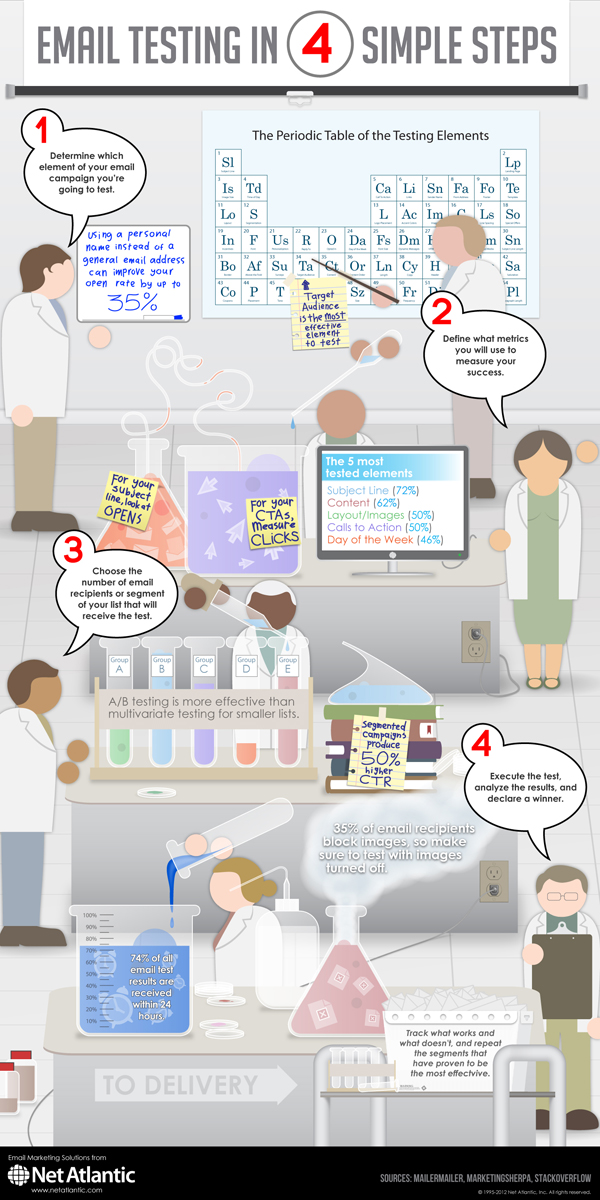Email marketing best practices dictate that testing be performed for each mailing you send out. And it makes sense! Why would you want to distribute what would otherwise be a broken email message to your carefully cultivated audience? So many things could go wrong (e.g., improperly formatted HTML, images not loading as planned, incorrectly entered merge tags, etc.) that it’s worth the extra few moments to ensure that your communications go out without a hitch. But that’s just testing for delivery. How about testing for effectiveness?
Testing your email content — and in a larger sense, your message — is an often overlooked step in the email marketing process despite it being a best practice. And it’s kind of silly that it’s so often forgotten about, really. Why wouldn’t you want what you send to be the most effective it could be? Much as you want to ensure the technology supporting the transmission of your communication is functioning as intended, you should also see to it that your message is producing the results you set out to achieve. But how do you do that? What do you change to make your campaign more effective? How do you measure this change?
Given its undeniable tie to the success of your campaigns, email testing is a pretty big deal. And unless you are 100% satisfied with your email marketing effort’s performance as is, it’s a big deal that you should probably address. But don’t fret; while it may seem somewhat complicated, fundamentally it’s a pretty simple process.
Our Email Testing In 4 Simple Steps infographic illustrates exactly how simple it is.





 Mailing List Subscription Manager: Temporary Delivery Suspension
Mailing List Subscription Manager: Temporary Delivery Suspension

You must be logged in to post a comment.